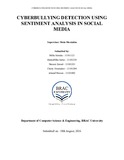| dc.contributor.advisor | Mostakim, Moin | |
| dc.contributor.author | Sintaha, Mifta | |
| dc.contributor.author | Satter, Shahed Bin | |
| dc.contributor.author | Zawad, Niamat | |
| dc.contributor.author | Swarnaker, Chaity | |
| dc.contributor.author | Hassan, Ahanaf | |
| dc.date.accessioned | 2016-09-20T05:18:10Z | |
| dc.date.available | 2016-09-20T05:18:10Z | |
| dc.date.copyright | 2016 | |
| dc.date.issued | 8/18/2016 | |
| dc.identifier.other | ID 13101123 | |
| dc.identifier.other | ID 13101258 | |
| dc.identifier.other | ID 13101283 | |
| dc.identifier.other | ID 13101290 | |
| dc.identifier.other | ID 13101002 | |
| dc.identifier.uri | http://hdl.handle.net/10361/6420 | |
| dc.description | Cataloged from PDF version of thesis report. | |
| dc.description | Includes bibliographical references (page 47-49). | |
| dc.description | This thesis report is submitted in partial fulfillment of the requirements for the degree of Bachelor of Science in Computer Science and Engineering, 2016. | en_US |
| dc.description.abstract | In this day and age, the usage of Social Media has increased enormously in our daily lives. People like to
share their experiences in various social media accounts for their friends to see. Consequently, the
possibility and growth of cyber threats have increased as well. To reduce this situation, we try to propose
a system that can detect cyber crimes such as fraud, blackmail, spam, impersonation etc. from the social
media network Twitter. This type of study can help people to detect early threats and possible criminal
activity and the types of accounts to stay alert of in real time thereby creating a more secure social media
experience. Our main goal is to compare various sentiment analysis approaches for detecting bullying or
threats from social media using three different machine learning algorithms and form a comparison to
determine which among the three gives out the highest accuracy in order for us to decide how to detect
cyber bullying activity on the Internet and be alert of threats in both the real and virtual world. | en_US |
| dc.description.statementofresponsibility | Mifta Sintaha | |
| dc.description.statementofresponsibility | Shahed Bin Satter | |
| dc.description.statementofresponsibility | Niamat Zawad | |
| dc.description.statementofresponsibility | Chaity Swarnaker | |
| dc.description.statementofresponsibility | Ahanaf Hassan | |
| dc.format.extent | 49 pages | |
| dc.language.iso | en | en_US |
| dc.publisher | BRAC University | en_US |
| dc.rights | BRAC University thesis are protected by copyright. They may be viewed from this source for any purpose, but reproduction or distribution in any format is prohibited without written permission. | |
| dc.subject | Support vector machine | en_US |
| dc.subject | RBF kernel | en_US |
| dc.subject | Cyberbullying detection | en_US |
| dc.subject | Social media | en_US |
| dc.title | Cyberbullying detection using sentiment analysis in social media | en_US |
| dc.type | Thesis | en_US |
| dc.contributor.department | Department of Computer Science and Engineering, BRAC University | |
| dc.description.degree | B. Computer Science and Engineering | |

